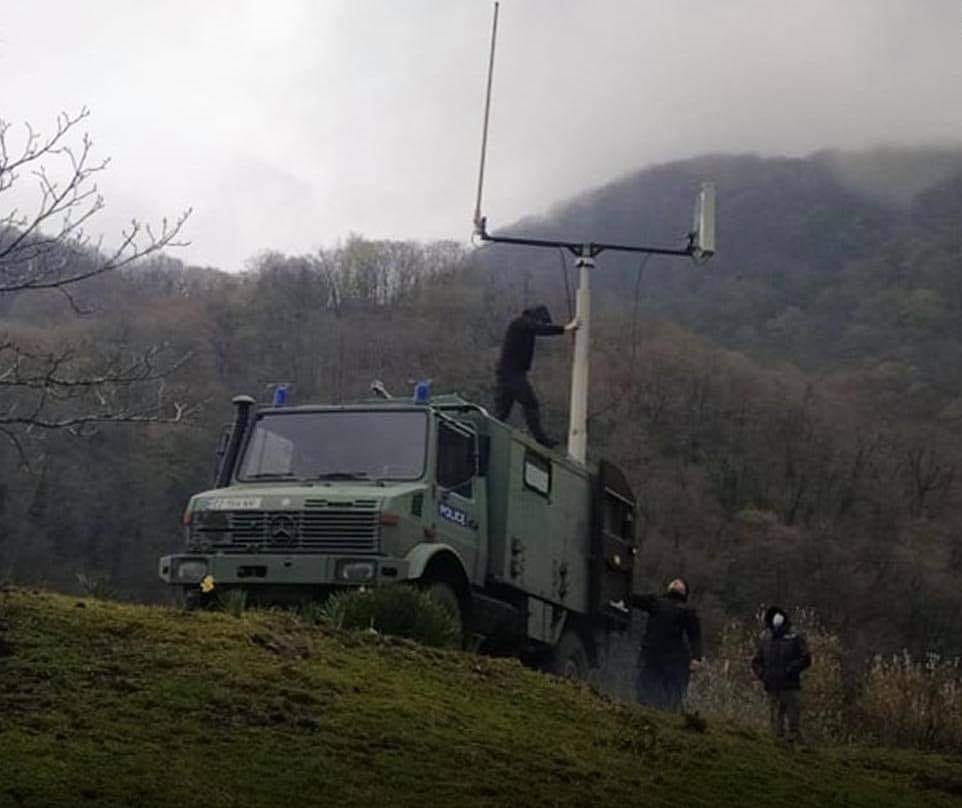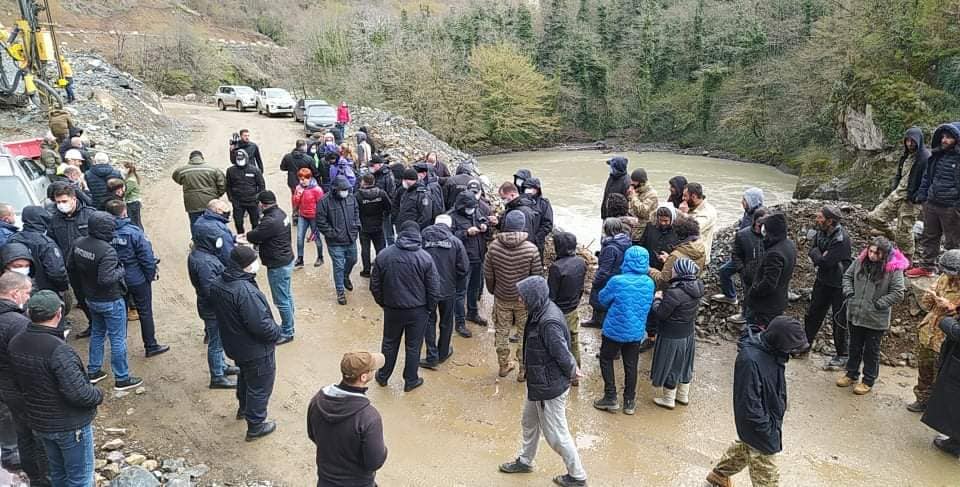Protests resume after work picks up on disputed hydro station in west Georgia
Namakhvani HPP protests resume
Mass protests resumed in the Namakhvani Gorge in western Georgia after equipment arrived on April 3 and preparatory work continued on the construction of the disputed Namakhvani hydroelectric power station.
The construction will require the relocation of dozens of families, and people are also confident that the project poses serious environmental and seismic threats: in this they are supported by many environmentalists.
Work before that was stopped for several weeks after local residents and activists from different parts of Georgia for almost four months, since October 2020, have been permanently protesting against this project. It is being implemented by the largest construction company in Turkey, ENKA.
This is the story of a film made for JAMnews by Georgian journalist Elene Asatiani.
Arguments of supporters and opponents of the dam below
The police completely blocked the road in Namakhvani and urged the population “not to go beyond the freedom of speech and obey law enforcement officers.” The activists, however, tried to break through to the work site. As a result of the confrontation, two of them were arrested.
Green Movement circulated this photo on social media in the morning and claims that it shows how a device that suppresses telephone signals was installed. However, activists later withdrew the charges, saying that “the police infrastructure was mobilized on the spot, including a special vehicle to ensure the normal operation of the radio station.”

The new ENKA director Meran Lominadze arrived in the gorge accompanied by a large police squad. The activists greeted him with shouts: “Slave” and “Go away.” Locals talk about Lominadze’s aggressive and disrespectful tone when talking to them. He stated that “the work related to the preparatory phase will be carried out as usual, as before. It is important not to delay the project”.
Lominadze, however, said that “the main work, including the construction of the dam, will not begin until the data obtained from the study is fully verified.”
“ENKA is ready to support the initiative of the Ministries of Economy and Environment to create an independent group of external experts who will study all the materials and give their verdict,” Meran Lominadze said.

The largest hydroelectric power station since independence
If the Namakhvani hydroelectric power station is nevertheless built, it will be the largest energy project of independent Georgia since the acquisition of its statehood after secession from the Soviet Union. One of such projects during the Soviet era was the Enguri hydroelectric power station.
The investment cost of the project is $800 million. The Turkish company Enka Riniebels Ltd plans to build a hydroelectric power station in Western Georgia in the Rioni River gorge, in the municipalities of Tskaltubo and Tsageri.
The Namakhvani HPP cascade includes two HPPs – Tvishi HPP with an installed capacity of 100 MW, which will be 60 meters high, and Namakhvani-Joneti with an installed capacity of 333 MW, which will be 111 meters. The total capacity is 433 MW. Annual output is 1,500 GWh.
What are the objections to the dam?
- The hydroelectric power station will completely flood the valley and endanger the existence of 18 villages. That is why the locals call the project “the dam of death”.
- The dam will stand just a few kilometers from the second largest city in Georgia, Kutaisi.
If the dam were completely out, a 34-meter wave could reach the city in 19 minutes.
- Environmentalists say the project is so ambitious that its impact on the environment has not yet been properly studied. This impact could be potentially critical.
- An environmental impact report prepared by the Gamma Consulting group says that the implementation of the Nizhny Namakhvani project alone will sacrifice a large amount of arable land, five villages will be flooded and about three hundred families will be resettled.
- The project is accompanied by serious seismic risks. According to experts of the organization “Green Alternative”, Namakhvani will not withstand an earthquake even with a force of five points. Meanwhile, a few kilometers from the city, in Racha, in 1991 there was an earthquake of magnitude seven.
- In addition to significantly changing the nature in the region, the hydroelectric power station will also change the culture of the region – tourism, cultural heritage, winemaking.
What does the HPP have to offer?
The Georgian government fully supports the project. Economy and Sustainable Development Minister Natia Turnava calls environmental concerns “exaggerated.”
Turnava visited the construction site of the hydroelectric power station several times and said that “this construction is one of the largest projects in the modern history of Georgia, a great contribution to the energy independence and security of the country.”


















